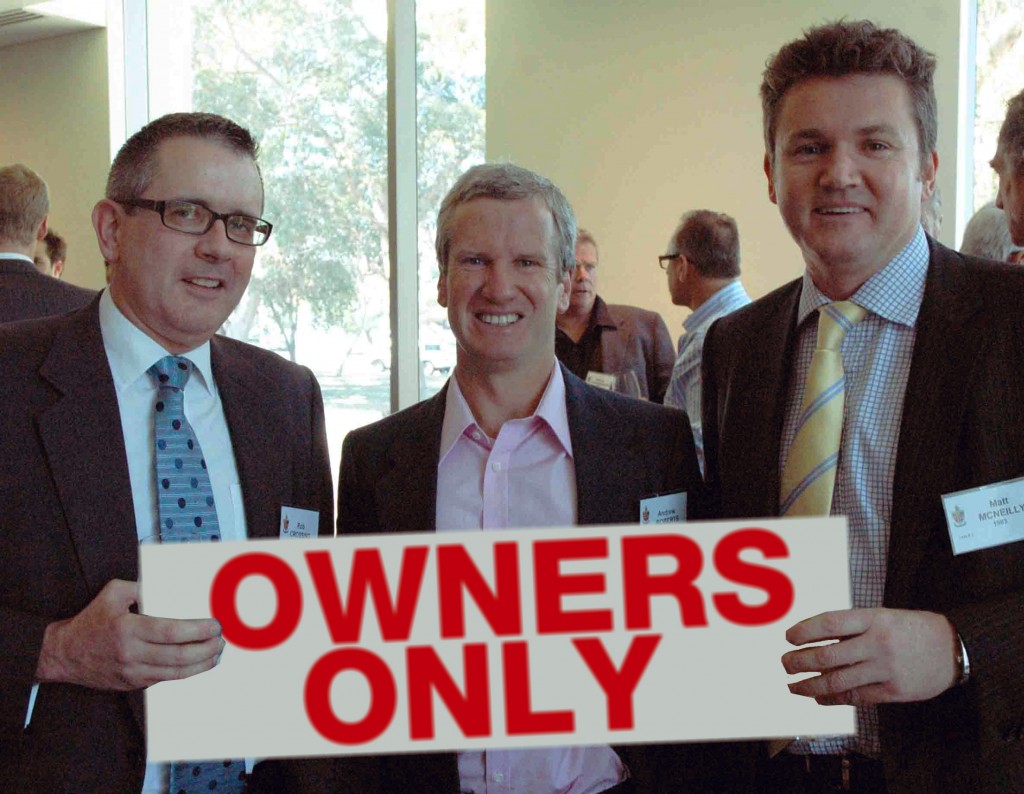
Our last post, 5 Reasons Why Business Education Conferences Are Dying, was a product of thinking about the future of the American Nursery & Landscape Association’s Management Clinic. We had originally thought to title it, “Why the Clinic Failed,” but decided to make it a more general article because we thought it might apply to more than just the Management Clinic. Now, we want to spend a few minutes forgetting the past and looking toward the future of the Clinic. Will it return? What will it look like?
We don’t possess any secret, inside knowledge. We assume the Clinic, if it does continue, will not be in Louisville. It may not be in late January. It may not be called the Clinic. It will most likely be a joint venture between ANLA & OFA. And, if you aren’t a business owner, you might not be invited.
One of the ideas we have heard mentioned over and over was that perhaps the next Clinic would be for “owners only.” Let’s examine why this could work, and why it might be a bad idea.
Why Owners Only Could Work.
1. Owners make decisions. They are the ones who control the purse strings. Managers, salespeople and buyers all may love the Clinic, but they aren’t the ones who decide whether they will attend or not.
2. Owners are willing to pay more. This has yet to be proven, actually. But the theory is that owners control the money and are willing to pay more for their own development and for high-level networking.
3. Owners need to meet for industry association business. Hey, there’s a lot of work to be done for associations, and the leaders need to meet in order to get things moving. Most of the industry leaders are also owners, so it makes sense to bring them together for both education and association business.
4. Owners can let their guard down when employees aren’t around. It can get uncomfortable to have your team listening to speaker after speaker catalog how business leaders are doing a poor job of leading and managing their teams. It is also more difficult for owners to share their struggles, doubts and failures when employees are around.
5. “Owners only” would mean a more focused, less complex conference. There wouldn’t need to be so many concurrent tracks. Fewer meeting rooms and speakers means a more cost-efficient conference.
6. There are fewer middle managers in the industry than there were a few years ago. Not sure I can prove this, but I suspect many have left the industry as companies have down-sized.
7. Timing is not as big of an issue. There’s no day on the calendar that isn’t somebody’s busy season. But the time of year is less of a concern because it’s easier for an owner to get away for a couple days than it is for several key employees.
8. A large room of business owners would be a high-value audience for sponsors. It wouldn’t matter if the conference were smaller if the all the attendees control the checkbooks. (Is that true?)
9. Owners only would probably lead to a more balanced mix of representation across the supply chain (retail/landscape/grower/greenhouse/distributor). The Clinic has for a long time been dominated by the retail sector.
10. An “owners only” conference may be easier for the OFA membership to understand; they may see the value more easily. How do you begin to explain the Clinic to someone who has never been? Maybe “owners only” helps to communicate the value.
11. An “owners only” conference may lead to better understanding/integration between the ANLA & OFA if the business owners have an opportunity to mix. Bringing multiple people from a single company can mean there is less interaction as folks from the same company spend time talking to themselves. Owners only would be more of a mixing bowl.
12. Exclusivity. An “owners only” conference may be able to be sold as an exclusive privilege to be able to attend. Perhaps there could be a cap placed on attendance…say 150. Maybe OFA could get 50 spots, ANLA would get 50 spots. They could be sold for, say, $1,000-3,000 each on a first-come-first-served basis. Then the remaining 50 could be auctioned off to the highest bidder. People want what others can’t have.

Why “Owners Only” Might Not be a Great Idea.
1. It looks like a clique. An “owners only” conference gives the appearance of a “good ole’ boys” network. Is that the way we want to begin the joint venture with the OFA and ANLA? By saying only the anointed may participate?
2. You have to sell the value of the Clinic to more people. An owner who believes in the value of the Clinic may bring 4, 6 or more people. If those folks aren’t allowed to attend, we’ll have to convince more businesses to participate to make up for the folks left at home.
3. Owners are often not the true leaders…the ones who actually get things done. Owners are not often the buyers. They like to think they are the decision makers, but many have delegated most important decisions to the managers they’ll leave behind at home. This will lead to ineffective networking. Buyers may be more important than owners.
4. Old dogs, old ground. Take a look around and you’ll see there are not that many “young” owners, and very few folks under 40 who have started their own business. This is very different than it was in the 80s. Are the same “old” owners the ones who have new ideas to drive change in our industry? We don’t want the Clinic to be a social club of semi-retired business owners. We need a majority of the attendees to be envisioning a brighter future, not trying to preserve the past.
5. Where do we train and inspire our bright up-and-comers?
Summary
We hope the Management Clinic returns in 2013, and we will support an “owners only” model. (But we won’t really like it.) We hope an “owners only” model would be temporary, a way to refine and reinvent the Management Clinic. We think it is less important to have only owners in the room as it is to have the “best and brightest.”
The goal should not be to find 1,000 people willing to pay for an educational conference. Let’s not settle for that. The goal should be to get the 1,000 best, smartest, most exciting people in the industry together in an open, sharing environment where they are inspired to dream big and equipped to lead change…who wouldn’t want to attend that meeting?
Thanks for reading! Let us know what you think by posting a comment. If you’re not brave enough for that, you can send me an email too!)
~Art




 Spring Meadow Nursery
Spring Meadow Nursery















